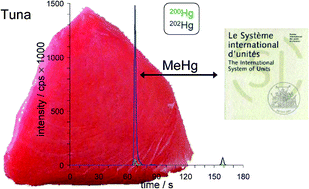SI-traceable certification of methylmercury amount content in a tuna material
Abstract
Speciation analysis has an ever-increasing relevance in environmental studies, for risk assessment and, eventually, for legislation. There is a concomitant need for reliability and comparability of speciation measurements made at different places and at different times, to assist with which the concepts of traceability (to a stated system of reference) and combined uncertainty budgetting can be applied. Traceability can be visualised as a chain, or a combination of chains, between a measurement result and a reference where each link in the chain(s) is a mathematical expression representing our best understanding of a measurement process, within a declared level of uncertainty. The combined uncertainty of the measurement result is calculated by combination of the uncertainties associated with each parameter of the traceability chain. This also helps method optimisation and in the diagnosis of possible errors in results by highlighting components that contribute significant uncertainty, provided that an appropriate uncertainty was attached to each parameter affecting the result. This work shows how a methylmercury, MeHg, measurement was made, and how understanding of the measurement process could make the result reliable and comparable to results between laboratories. The measurement process was validated according ISO 17025 through the use of reference materials for calibration, comparison of results with different methods, a systematic assessment of factors influencing the result, by calculating the combined measurement uncertainty and by participation in an inter-laboratory comparison. A tuna material was distributed for the laboratory inter-comparison studies for the Comité Consultatif pour la Quantité de Matière (CCQM) pilot study 39 and International Measurement Evaluation Programme (IMEP) comparison 20. MeHg was measured using species-specific isotope dilution,


 Please wait while we load your content...
Please wait while we load your content...